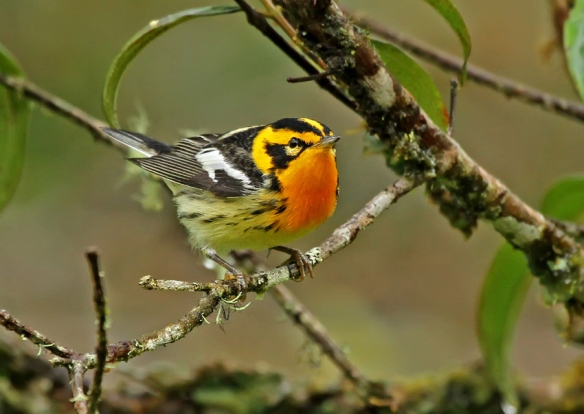[Traduccion en Espanol abajo]
I apologize for my long absence on this blog, due to an overloaded schedule along with health problems. There are mountains of news to share, and I will begin catching up in the course of the next few weeks, though I imagine all readers currently have their attention focused on the coronavirus, which is still in its exponential phase in Ecuador, the US, and most other countries. Everything indicates a coming disaster.

Spring plumage Blackburnian Warbler, Setophaga fusca, in Ecuador. Photo Roger Ahlman
Yet life goes on in the non-human world. A brilliant male Blackburnian Warbler perched above me this morning, on its way to the US, making light of our travel blockades. This fragile thing smaller than my hand will fly about 60 miles a day for more than 4000 miles (6600km) in the next month and a half, over a path that many individuals have never tried before (the route north is slightly different from the route south), finally crossing the Gulf of Mexico (600 miles, 1000km) in a single nonstop flight, falling exhausted on the beaches of Texas by mid April, and then picking itself up off the ground and crossing most of the US, all to reach its northern conifer forest breeding grounds. Half of these birds will die on each round trip, but the northern forests will briefly be filled with the songs of the survivors, until they must start their trip anew in the opposite direction. Life goes on for them, oblivious to the human suffering below.
I wish all of our readers the best during these difficult times. Isolate yourselves, wear rubber gloves if you have to go to the grocery store, and don’t touch your face.
Lou Jost
Regreso a la vida
IMG 01 – Plumaje de primavera de Reinita pechinaranja (Blackburnian Warbler, Setophaga fusca) en Ecuador. Fotografía: Roger Ahlman
